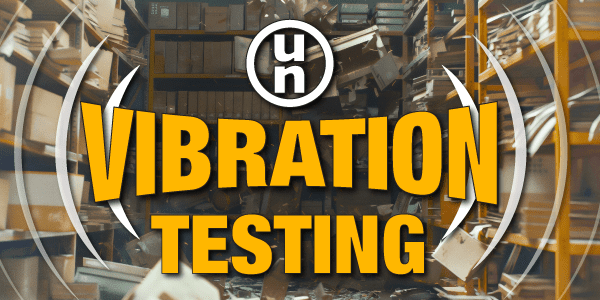
Are You Ready for e-Manifests?
Paperwork – it’s one of the worst parts of dealing with hazardous waste shipments. In both Canada and the United States, hazardous wastes require a special document, the Waste Manifest that will not only serve as the transportation document for the dangerous goods/hazardous materials transportation regulations, but also allow environmental authorities to track the waste from the generator, who sends it for disposal, through the hands of the carrier, to the end receiver (in the US referred to as a TSDF, for Hazardous Waste Treatment, Storage and Disposal Facility).
In Canada, some jurisdictions have eased the burden by allowing the waste manifest to be created electronically. For example, in Ontario, the HWIN system has been used for years. However, until now, the United States has not had a system for electronic documentation, called e-Manifests. On June 30, 2018, that has changed.
The change has been a long time coming. Although the initial proposal by the Environmental Protection Agency (EPA) was made in 2001, it was not until 2012 that Congress passed the “Hazardous Waste Electronic Manifest Establishment Act.” Under the Act, a final rule was published in 2014 that approved the use of such manifests. Since then, the EPA has been working to create an online system that will allow the e-manifest to eliminate substantial chunks of the burden of manifests, as well as the costs.
Registration for e-Manifests
Generators, carriers, and receiving facilities can register with the EPA to use e-manifests here. Brokers must register if they wish to use e-manifests on behalf of their clients.
You’ll need an EPA ID number in order to register.
Once you do, you should assign a Site Manager. Actually, EPA advises assigning two or more, since the managers will have the power to assign permissions for other employees within your organization. Depending on their functions, employees can create, view or sign manifests with an approved e-signature.
The created e-manifests can be transmitted to involved parties, including government agencies, online. They can also be saved on your hard drive as Adobe PDF files, or printed as hard copies.
Do You Have to Go Digital? And Why Should You?
No, not for the time being. The e-manifest system has a five-year transition phase for waste generators, so you have until June 30, 2023 to make the switch. (Waste receiving sites must go electronic more quickly, within three years.). So those who prefer creating manifests by hand will have time left. But there’s plenty of benefits for switching as soon as possible.
First, the costs to the government for monitoring digital documents is lower than for hardcopies, and the savings will be passed in the fee structure. The fee for a paper manifest will, in the new system, be set at $15.00 (at least for the first year), but only $5.00 for submitting the information electronically.
Not only will you save money, but the e-system allows you to save labor time as well. Notification to the EPA and state departments will be made automatically through the system, saving you that tiresome job of putting an address on an envelop and attaching a stamp. Better yet, the system will electronically save the record, so it will comply with both EPA and Department of Transportation (DOT) record-keeping requirements. No more filing copies! (Of course, if you don’t trust the system entirely, you can also save the electronic records on your own system, or print hard copies.)
Best of all, the EPA appears to have done an effective job of creating a user-friendly system. Using a combination of drop-down choices and fields for free text, completing the e-manifest should be quick and stress-free. For example, you can simply input the UN number or shipping name of a type of waste, and the shipping description will be added automatically, with prompts for those easy-to-forget extras such as technical names and Reportable Quantities (RQs). Names and addresses of registered carriers and TSDFs will be in the system, so can be populated with a single mouseclick.
Note that the required information on the e-manifest is exactly the same as what has been required on the paper-based Uniform Hazardous Waste Manifest. So, you’ll not need to learn a new system. It’s just a matter of doing it by keyboard and mouse.
What about DOT Compliance?
Speaking of the DOT, waste manifests may also be used to fulfill the requirements of 49 CFR for hazmat shipping papers. However, there’s one thing an e-manifest can’t do. DOT still requires a hard copy of the hazmat paper to be physically present during transportation. Since the hazmat document is intended to be used in the field if there’s an accident, relying on internet access isn’t yet sufficient. So, either the shipper or the carrier must print out a hard copy to go with the goods.
The Future of Hazard Communication?
The e-manifest system has the potential to reduce the paperwork load on organizations that generate or handle hazardous waste, and also to improve how generators, carriers, TSDFs, and government can track and analyze hazardous waste shipment. It will even improve public access to environmental information as records will become publicly available after 90 days.
This may be the start of serious work at digitizing the way information is provided when hazardous materials are transported. While questions such as how to access online information in the field remain to be solved, imagine a time when emergency responders could download information on the type and quantity of hazardous materials in a spill before they even reach the site, or pinpoint the location by GPS.
If you have questions about registering to use the e-manifest system, or how it works, the EPA has a website devoted to it:
https://www.epa.gov/e-manifest.
Do you have any questions about DOT compliance for hazardous wastes? Contact ICC Compliance Center here at 888-442-9628 in the USA, 888-977-4834 in Canada., and ask for one of our regulatory specialists. We can help you find the information you need.





